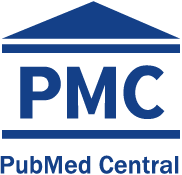Double-carbapenemase-producing Enterobacteriaceae: complete genome sequencing of isolates from hospitals in Paraguay, 2021
DOI:
https://doi.org/10.17843/rpmesp.2025.422.14293Keywords:
Klebsiella pneumoniae, Enterobacter cloacae, carbapenem resistance, dual production of carbapenemases, Whole genome sequencing, Illumina Miseq, ParaguayAbstract
Objectives. To describe the whole genome sequencing of double-carbapenemase-producing Enterobacteriaceae isolates circulating in Paraguay. Materials and methods. We conducted genomic studies on seven Enterobacteriaceae isolates, previously confirmed as double-carbapenemase producers by PCR, from patients with extended hospital stays and broad-spectrum antimicrobial treatment in seven hospitals in Paraguay. Genome sequencing included Unicycler assembly and multilocus sequence typing (MLST). Results. Of the seven Enterobacterales isolates producing dual carbapenemases, six were Klebsiella pneumoniae subsp. pneumoniae and one was Enterobacter cloacae subsp. cloacae. The co-production of blaKPC-2/blaNDM-1 and blaKPC-2/blaNDM-5 was confirmed in K. pneumoniae. We found co-production of blaNDM-1/blaOXA-163 in E. cloacae, along with other antimicrobial resistance genes of chromosomal and plasmid origin. The MLST sequence types of the K. pneumoniae isolates were ST11, ST15, ST133, ST273, and ST1303, and that of E. cloacae was ST976. Two of the six K. pneumoniae ST11 isolates, from two different hospitals in the capital, were genetically related and both carried blaKPC-2 and blaNDM-5. Conclusions. We report the first genome sequencing of double-carbapenemase-producing Enterobacterales from patients with extended hospital stays in Paraguay. The analysis revealed diverse resistance profiles and clones, carriage of multiple carbapenemases, and other resistance genes of chromosomal and plasmid origin. These findings emphasize the need to strengthen hospital infection control and implement effective therapeutic interventions.
Downloads
References
Etienne C. Americas Report Surge in Drug‐Resistant Infections due to Misuse of Antimicrobials During Pandemic; 2021. https://www.paho.org/en/news/17-11-2021-americas-report-surge-drug-resistant-infections-due-misuse-antimicrobials-during.
Lynch JP 3rd, Clark NM, Zhanel GG. Escalating antimicrobial resistance among Enterobacteriaceae: focus on carbapenemases. Expert Opin Pharmacother. 2021 Aug;22(11):1455-1473. doi: 10.1080/14656566.2021.1904891. Erratum in: Expert Opin Pharmacother. 2021 Oct;22(14):i-ii. doi: 10.1080/14656566.2021.1981568.
WHO. WHO bacterial priority pathogens list, 2024: Bacterial pathogens of public health importance to guide research, development and strategies to prevent and control antimicrobial resistance. https://www.who.int/publications/i/item/9789240093461.
Falagas ME, Tansarli GS, Karageorgopoulos DE, Vardakas KZ. Deaths attributable to carbapenem-resistant Enterobacteriaceae infections. Emerg Infect Dis. 2014;20(7):1170-5. doi: 10.3201/eid2007.121004.
Vardakas KZ, Tansarli GS, Rafailidis PI, Falagas ME. Carbapenems versus alternative antibiotics for the treatment of bacteraemia due to Enterobacteriaceae producing extended-spectrum β-lactamases: a systematic review and meta-analysis. J Antimicrob Chemother. 2012 Dec;67(12):2793-803. doi: 10.1093/jac/dks301.
Hall BG, Barlow M. Revised Ambler classification of {beta}-lactamases. J Antimicrob Chemother. 2005;55(6):1050-1. doi: 10.1093/jac/dki130.
Melgarejo-Touchet N, Brítez CM, Busignani S, Falcón M, López E. Molecular characterization of carbapenemases in Gram-negative bacilli circulating in hospitals of Paraguay. First quarter of 2021. Memorias del Instituto de Investigaciones en Ciencias de la Salud, 2021; 19(2): 49–58. doi: 10.18004/mem.iics/1812-9528/2021.019.02.49.
Pasteran F, Mora MM, Albornoz E, Faccone D, Franco R, Ortellado J, et al. Emergence of genetically unrelated NDM-1-producing Acinetobacter pittii strains in Paraguay. J Antimicrob Chemother. 2014 Sep; 69(9): 2575-8. doi: 10.1093/jac/dku139. PMID: 24793901.
Melgarejo N, Martínez M, Franco R, Falcón M. Enterobacteria Carbapenem-resistant KPC by production, isolated in hospitals and Asunción and Central Department. Revista de Salud Pública del Paraguay. 2013; 3(1): 30-5.
Organización Panamericana de la Salud. Alerta epidemiológica. Emergencia e incremento de nuevas combinaciones de carbapenemasas en Enterobacterales en Latinoamérica y el Caribe. 22 de octubre de 2021. Disponible en: https://www.paho.org/es/documentos/alerta-epidemiologica-emergencia-e-incremento-nuevas-combinaciones-carbapenemasas.
Ministry of Public Health and Social Welfare of Paraguay. Antimicrobial section, Bacteriology and Mycology Department, Central Laboratory of Public Health. Increase in the isolation of gram-negative bacilli resistant to broad-spectrum antimicrobials in hospitals in Paraguay. 2021 Jun. https://www.mspbs.gov.py/portal/23539/alerta-por-resistencia-antimicrobiana-a-todos-los-laboratorios-del-pais.html.
Melgarejo Touchet N, Busignani S, Dunjo P, Brítez M, Kawabata A, Silvagni, et al. First report of double carbapenemases-producing
Enterobacterales in hospitals of Paraguay. Year 2021. Mem Inst Investig Cienc Salud. 2021;19(3):35–43. doi:10.18004/mem.iics/1812-
/2021.019.03.35.
Servicio Antimicrobianos; Instituto Nacional de Enfermedades Infecciosas; Administración Nacional de Laboratorios e Institutos de Salud “Dr. Carlos G. Malbrán”. Protocolo de PCR multiplex para detección de carbapenemasas. Disponible en: http://antimicrobianos.com.ar/ATB/wp-content/uploads/2021/01/Deteccion-CBP-Multiplex.pdf. (13)
Wick RR, Judd LM, Gorrie CL, Holt KE. Unicycler: Resolving bacterial genome assemblies from short and long sequencing reads. PLoS Comput Biol. 2017 Jun 8;13(6):e1005595. doi: 10.1371/journal.pcbi.1005595.
Seemann T. Prokka: rapid prokaryotic genome annotation. Bioinformatics. 2014;30: 2068-2069. doi: 10.1093/bioinformatics/btu153, disponible en: https://www.ncbi.nlm.nih.gov/pubmed/24642063.
Hunt M, Mather AE, Sánchez-Busó L, Page AJ, Parkhill J, Keane JA, et al. ARIBA: rapid antimicrobial resistance genotyping directly from sequencing reads. Microb Genom. 2017 Sep 4;3(10):e000131. doi: 10.1099/mgen.0.000131.
Zankari E, Hasman H, Cosentino S, Vestergaard M, Rasmussen S, Lund O, et al. Identification of acquired antimicrobial resistance genes. J Antimicrob Chemother. 2012 Nov;67(11):2640-4. doi: 10.1093/jac/dks261.
Zankari E, Allesøe R, Joensen KG, Cavaco LM, Lund O, Aarestrup F. PointFinder: a novel web tool for WGS-based detection of antimicrobial resistance associated with chromosomal point mutations in bacterial pathogens. J Antimicrob Chemother. 2017; 72(10): 2764–8. doi: 10.1093/jac/dkx217.
Carattoli A, Zankari E, Garcia-Fernandez A, Voldby Larsen M, Lund O, Villa L, et al. PlasmidFinder and pMLST: in silico detection and typing of plasmids. Antimicrob. Agents Chemother. 2014;58(7):3895-903. doi: 10.1128/AAC.02412-14.
Feldgarden M, Brover V, Gonzalez-Escalona N, Frye JG, Haendiges J, Haft DH, et al. AMRFinderPlus and the Reference Gene Catalog facilitate examination of the genomic links among antimicrobial resistance, stress response, and virulence. Sci Rep. 2021 Jun 16;11(1):12728. doi: 10.1038/s41598-021-91456-0.
Stamatakis A. RAxML version 8: a tool for phylogenetic analysis and post-analysis of large phylogenies. Bioinformatics. 2014 May
;30(9):1312-3. doi: 10.1093/bioinformatics/btu033.
Argimón S, Abudahab K, Goater RJE, Fedosejev A, Bhai J, Glasner C, et al. Microreact: visualizing and sharing data for genomic epidemiology and phylogeography. Microb Genom. 2016 Nov 30;2(11):e000093. doi: 10.1099/mgen.0.000093.
Lam MMC, Wyres KL, Wick RR, Judd LM, Fostervold A, Holt KE, et al. Convergencia de virulencia y MDR en un solo vector de plásmido
en MDR Klebsiella pneumoniae ST15. J Antimicrob Chemother. 2019 May 1;74(5):1218-1222. doi: 10.1093/jac/dkz028.
Martins WMBS, Nicolas MF, Yu Y, Li M, Dantas P, Sands K, et al. Clinical and Molecular Description of a High-Copy IncQ1 KPC-2 Plasmid Harbored by the International ST15 Klebsiella pneumoniae Clone. mSphere. 2020 Oct 7;5(5): e00756-20. doi: 10.1128/mSphere.00756-20.
Rodrigues YC, Lobato ARF, Quaresma AJPG, Guerra LMGD, Brasiliense DM. The Spread of NDM-1 and NDM-7-Producing Klebsiella pneumoniae Is Driven by Multiclonal Expansion of High-Risk Clones in Healthcare Institutions in the State of Pará, Brazilian Amazon Region. Antibiotics (Basel). 2021 Dec 14;10(12):1527. doi: 10.3390/antibiotics10121527.
Benulič K, Pirš M, Couto N, Chlebowicz M, Rossen JWA, Zorec TM, et al. Whole genome sequencing characterization of Slovenian carbapenem-resistant Klebsiella pneumoniae, including OXA-48 and NDM-1 producing outbreak isolates. PLoS One. 2020 Apr 13;15(4):e0231503. doi: 10.1371/journal.pone.0231503.
Pasteran F, Faccone D, Rapoport M, Veliz O, Guerriero L, Gomez S, et al. Rápida diseminación de OXA-163 carbapenemasa, una variante emergente de OXA-48, en especies de Enterobacteriaceae en múltiples hospitales de Argentina: clones múltiples y problemas de detección. Abstr 22th Eur Congress Clin Microbiol Infect D. 2012.
Scherer J de S, Calvetti RA. Descrição de casos de Enterobactérias Produtoras de Carbapenemases subtipos Oxa-48 e NDM em hospital público de Porto Alegre. Revista de Epidemiologia e Controle de Infecção. 2017;7(2):1-6. doi: 10.17058/reci.v7i2.6273.
Dimou V, Dhanji H, Pike R, Livermore DM, Woodford N. Characterization of Enterobacteriaceae producing OXA-48-like carbapenemases in the UK. J Antimicrob Chemother. 2012 Jul;67(7):1660-5. doi: 10.1093/jac/dks124.
López-Hernández I, García Barrionuevo A, Díaz de Alba P, Clavijo E, Pascual A. Characterization of NDM-1- and CMH-3-producing
Enterobacter cloacae complex ST932 in a patient transferred from Ukraine to Spain. Enferm Infecc Microbiol Clin. 2020;38(7):327-330.
doi: 10.1016/j.eimc.2019.10.007.
Gao H, Liu Y, Wang R, Wang Q, Jin L, Wang H. The transferability and evolution of NDM-1 and KPC-2 co-producing Klebsiella pneumoniae from clinical settings. EBioMedicine. 2020 Jan;51:102599. doi: 10.1016/j.ebiom.2019.102599.
Ahmed MAEE, Yang Y, Yang Y, Yan B, Chen G, Hassan RM, et al. Emergence of Hypervirulent Carbapenem-Resistant Klebsiella pneumoniae Coharboring a blaNDM-1-Carrying Virulent Plasmid and a blaKPC-2-Carrying Plasmid in an Egyptian Hospital. mSphere. 2021 May 19;6(3):e00088-21. doi: 10.1128/mSphere.00088-21.
Li P, Liang Q, Liu W, Zheng B, Liu L, Wang W, et al. Convergence of carbapenem resistance and hypervirulence in a highly- transmissible ST11 clone of K. pneumoniae: An epidemiological, genomic and functional study. Virulence. 2021 Dec;12(1):377-388. doi:
1080/21505594.2020.1867468.
Lawlor MS, O’connor C, Miller VL. Yersiniabactin is a virulence factor for Klebsiella pneumoniae during pulmonary infection. Infect Immun. 2007 Mar;75(3):1463-72. doi: 10.1128/IAI.00372-06.
Hsu CR, Lin TL, Chen YC, Chou HC, Wang JT. The role of Klebsiella pneumoniae rmpA in capsular polysaccharide synthesis and virulence revisited. Microbiology. 2011 Dec;157(Pt 12):3446-3457. doi: 10.1099/mic.0.050336-0.
Downloads
Published
Issue
Section
License
Copyright (c) 2025 Nancy Melgarejo Touchet, Natalie Weiler, Sofía Busignani, Verónica Orrego, María José Duarte, Jazmin Martínez, Pamela Dunjo, Mario Martínez Mora, Aníbal Kawabata, Juan Irala, Mariel Brítez, Federico Escobar, Fátima Gonzalez, Carmen Riquelme; Beatriz Soilan

This work is licensed under a Creative Commons Attribution 4.0 International License.




























